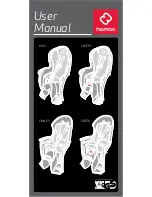
© Opticstar Ltd 2013-2015
11
JULY
Lyra
MGN
M57
The Ring Nebula is a great example of a planetary nebula that is visible in a smaller telescope, the M57 takes
magnification very well. The M57 is illuminated by a central white dwarf or planetary nebula nucleus of 15.75
magnitude.
9.5
Vulpecula
M27
The Dumbbell Nebula is the brightest nebula in the sky. Larger instruments may show hints of colour and also its
central star. The central region of the nebula is marked by a pattern of dark and bright cusped knots and their
accompanying dark tails.
7.5
NGC6885
Open cluster consisting of around 30 stars.
9.1
Scutum
M11
The Wild Duck cluster with around 3,000 stars.
7.0
Sagittarius
M8
The Lagoon Nebula can be seen to the unaided eye under dark skies. Larger telescopes will reveal the nebula’s
interesting structure.
5.0
M17
The Omega Nebula has around 30 stars set in its mass where star formation is taking place. Larger instruments will
reveal considerable detail.
7.0
M20
The Trifid Nebula is a hot red emission nebula surrounded by a blue reflection nebular made of dust. It displays 3
radial lanes that become apparent in moderate size telescopes.
5.0
M22
Globular cluster consists of over half a million stars. It will resolve well in larger telescopes. M22 is one of the closer
globular clusters to Earth at a distance of around 10,600 light years.
5.1
M23
Open cluster with 150 identified members, the brightest being of magnitude 9.2.
6.9
M25
A loose open cluster of around 600 stars. A pleasant sight in telescopes under low powers.
4.9
M55
Open cluster with a loose collection of stars.
7.0
NGC6603
Open cluster superimposed over a rich stellar region.
11.1
Cerpens Cauda
NGC6611
Open cluster.
6.0
AUGUST
Cygnus
MGN
NGC6866
Open cluster.
5.5
Pegasus
M15
Bright and compact globular cluster. Larger telescopes will resolve stars its periphery and also round its centre.
6.2
Aquarius
M2
Globular cluster with around 100,000 stars.
7.5
NGC7009
The Saturn Nebula resembles the shape of Saturn, it takes magnification well. It is a complex planetary nebula
consisting of a halo, jet-like streams, multiple shells and small-scale filaments and knots.
8.3
Vulpecula
NGC6940
Open cluster over a rich star field. Will show individual stars in a moderate size telescope.
6.5
SEPTEMBER
Andromeda
MGN
NGC7662
A captivating planetary nebulae situated between Andromeda and Lacerta. It has a faint at its centre that is variable. A
small telescope will reveal a star-like object with slight nebulosity. A 6" telescope at x100 magnification will reveal a
slightly bluish disk.
8.6
Cassiopeia
M52
Star cluster with hundreds of stars.
10.7
Pegasus
NGC7320
This galaxy is the brightest member of the so-called Stephan’s Quintet.
16.8


































